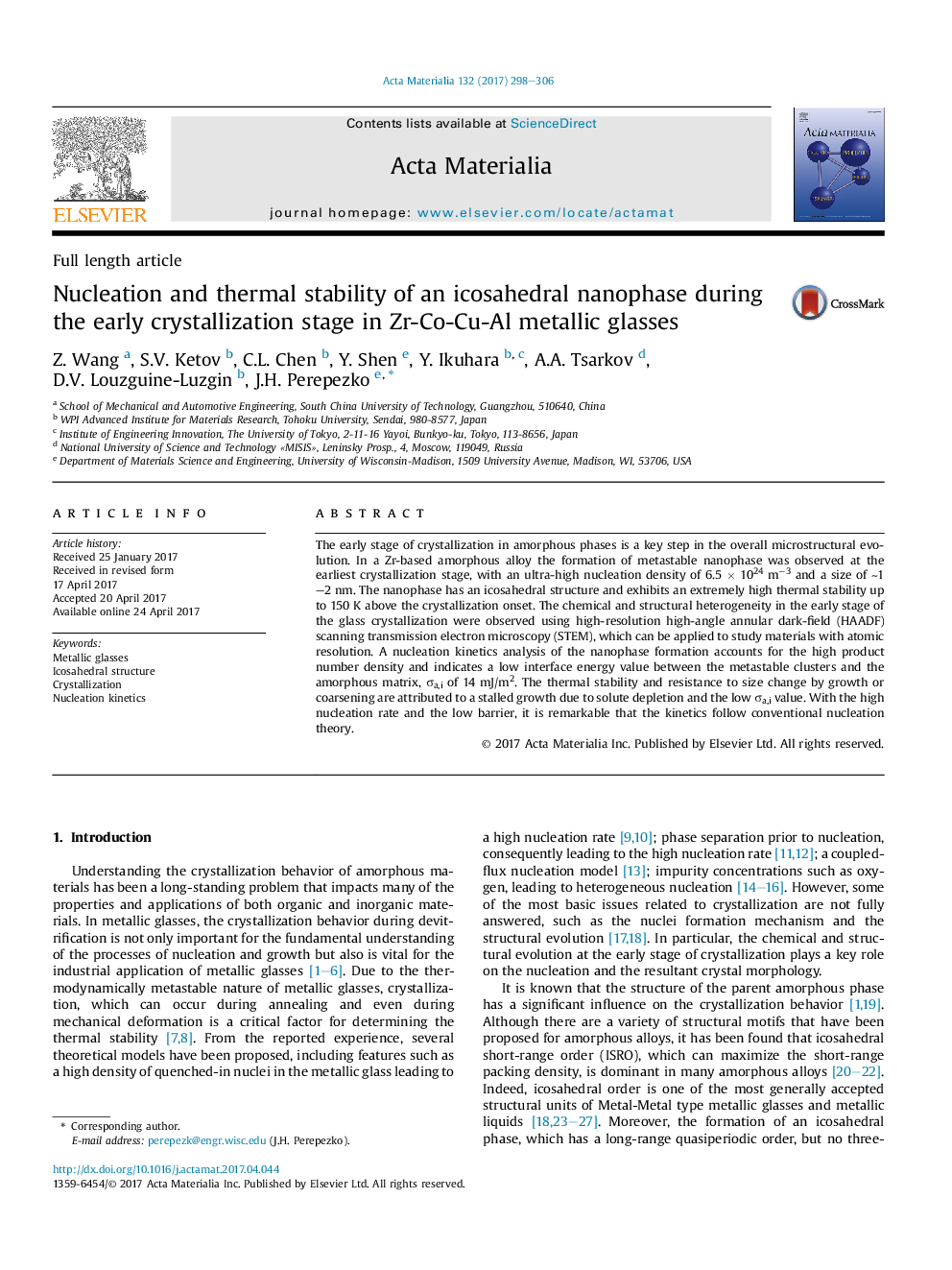| کد مقاله | کد نشریه | سال انتشار | مقاله انگلیسی | نسخه تمام متن |
|---|---|---|---|---|
| 5436165 | 1509544 | 2017 | 9 صفحه PDF | دانلود رایگان |

The early stage of crystallization in amorphous phases is a key step in the overall microstructural evolution. In a Zr-based amorphous alloy the formation of metastable nanophase was observed at the earliest crystallization stage, with an ultra-high nucleation density of 6.5 × 1024 m−3 and a size of ∼1–2 nm. The nanophase has an icosahedral structure and exhibits an extremely high thermal stability up to 150 K above the crystallization onset. The chemical and structural heterogeneity in the early stage of the glass crystallization were observed using high-resolution high-angle annular dark-field (HAADF) scanning transmission electron microscopy (STEM), which can be applied to study materials with atomic resolution. A nucleation kinetics analysis of the nanophase formation accounts for the high product number density and indicates a low interface energy value between the metastable clusters and the amorphous matrix, σa,i of 14 mJ/m2. The thermal stability and resistance to size change by growth or coarsening are attributed to a stalled growth due to solute depletion and the low σa,i value. With the high nucleation rate and the low barrier, it is remarkable that the kinetics follow conventional nucleation theory.
Figure optionsDownload high-quality image (552 K)Download as PowerPoint slide
Journal: Acta Materialia - Volume 132, 15 June 2017, Pages 298–306